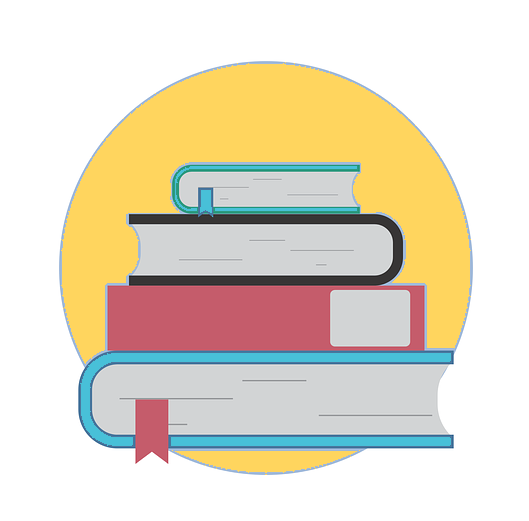9.4 Examples and Ideas for Open Assignments
What does open pedagogy look like inside of a course?
In this section, we’ve collected some examples of open assignments and projects at UBC and beyond. Let’s start with the below video in which Janette Bulkan, Assistant Professor for Indigenous Studies in UBC’s Faculty of Forestry, describes how she has been using a wiki to empower her students to create and share conservations resources:

Scenario – Redesigning an Assignment
Let’s consider this scenario: In Dr. Chan’s course on food science, they have been asking students to design posters on specific issues related to the topics in the course. At the end of the course, there is a poster presentation session in which students have an opportunity to display their posters in the lobby of the faculty building. Dr. Chan has noticed that while the students put effort into the posters, very few students come to pick up their posters after the session and she ends up recycling them at the end of the term. They would like to redesign the assignment so that the students’ work and efforts do not go to waste.
- What steps or strategies could Dr. Chan implement to make sure their students’ work has meaning and is valuable beyond course?
Open Pedagogy at UBC
There are many specific examples of open pedagogy at UBC, such as:
Latin American Studies students creating and sharing video-based learning objects for their classes
In Jon Beasley-Murray’s Introduction to Latin American Studies course, students are creating videos about specific course topics as well as writing weekly personal reflections on their blogs.
Engineering students creating an open online textbook
Agnes d’Entremount’s engineering students are using the UBC Wiki to write an open textbook that will contain literature reviews and course topics. The open textbook will be set up on a UBC wiki, and will be available for future students to use and build on it.
Gender, Race, Sexuality and Social Justice students creating, publishing, and sharing zines
This project by Jessi Taylor and Erin Fields saw students in a GRJS course work together to collectively create their own zines around self-chosen topics that will allow students to bring the community into the classroom. The students’ zines were incorporated into an open ‘Zine Faire’ day and put on display in Koerner Library.
Forestry students creating open conservation case studies
Students in several different forestry courses taught by Janette Bulkan and Fernanda Tomaselli are creating open education resources that can be used worldwide. The resources are created on the UBC Wiki and published on the UBC Open Case Studies site, which brings together faculty and students from different disciplines to write, edit, and learn with case studies that are free and open–they are publicly available free of cost, and they are licensed to allow others to revise and reuse them.
Courses across UBC having students analyze, edit, and improve Wikipedia
Wikipedia is one of the worlds most used open resources but it contains gaps and biases. However, any one can contribute to it and students in UBC courses in history, Latin American studies, biology, food sciences, literature, soil sciences, ecology, and more have been assigned to analysis, create or edit Wikipedia articles. For more information, see Tina Loo’s or Jon Beasley-Murray’s essays on why they used Wikipedia in the classroom.
Physics students creating course learning resources
In Simon Bates’s Physics 101 course, students created original learning objects about a concept or topic in the readings which they found challenging. Students were encouraged to be creative and pick a topic that interested them and share their resources on a course blog. In order to create a collaborative learning community, students were asked to apply a Creative Commons license to their objects, so others could access and learn from their resources.
Classics students creating an open textbook/reader
Siobhán McElduff’s students are creating an OER reader on socially stigmatized groups in ancient Rome as part of their course assignments. The reader will contain out of copyright and original translations of ancient texts, along with student-scholar created introductions, glossaries, images and other explanatory material.
Law students publicly analyzing issues and blogging
In Jon Festinger’s law courses, students are invited to publicly analyze and reflect on issues related to their course as part of their participation marks.
Other examples beyond UBC
- Students writing multiple-choice questions: During each of the 10 weeks when there was no scheduled exam, this instructor asked their students to write multiple-choice questions. However, this assignment also served a pragmatic purpose in that the open textbook that they use for this course does not yet have a readymade question bank.
- Students creating open resources: Introduction to the Brain has been created by final year Psychology students including an introductory information pack for high school students and an activity with printable materials.
- Open assignment banks: This site hosts the assignments that participants in the open online digital storytelling course, ds106, complete as part of their work in the course. Rather than specifying assignments, everyone must do, participants can choose from an array of ones included on this site- all of them have been created by course participants.
- Students writing open textbooks: This book was created entirely by students in a Fall 2016 section of a first-year seminar at Plymouth State University. It was organized around a core set of open pedagogical practices. The theme for the course was “Whose Course Is This, Anyway?” Students created all learning outcomes, assignments, course policies, and grading processes.
- Students creating apps: In a course at TRU called Designing Legal Expert Systems: Apps for Access to Justice, students worked with non-profit ‘client’ organizations to take legal knowledge and rules as a series of decision-making trees and translate that onto an app.
This list was adapted from Mural UDG Open Pedagogy module by Tannis Morgan. It is shared under a Creative Commons Attribution-NonCommercial 4.0 International License.

Dig Deeper
To read about more examples of open pedagogy assignments and projects, you may wish to browse the Open Pedagogy Notebooks’s Example Repository.
Ideas for Students
Students can also take the initiative on open projects. They can turn assignments, essays, and other academic work into an open educational resources. For example, if you are a student, you could:
- Consider applying a Creative Commons license to your work which makes it more shareable.
- Make your work easy to download or take apart for remixing.
- Publish your course essays on a blog or wiki or in an open journal.
- If you take photos or create images or other media, especially if you do so in the course of their studies, consider uploading them to a sharing platform like flickr that allows you to license them openly.
Publishing and sharing is a key part of scholarship and academic life and there are many options for students to publish their work and there are many options for publishing including creating a UBC site or blog for posting and sharing their work, posting their work to UBC Library’s institutional open access repository, cIRcle.

Reflection on Open Platforms
UBC supports a number of different educational technologies that can support open pedagogy assignments. Two of the most commonly used are UBC Blogs and the UBC Wiki. Please read the following teaching guides, which include examples of how instructors using these platforms, and reflect upon your own courses:
Could you see yourself incorporating either of these tools into a course assignment? Would it make those assignments “open”? What would you need to do to get started? What questions would you have and what support would you need? What support would your students need?
